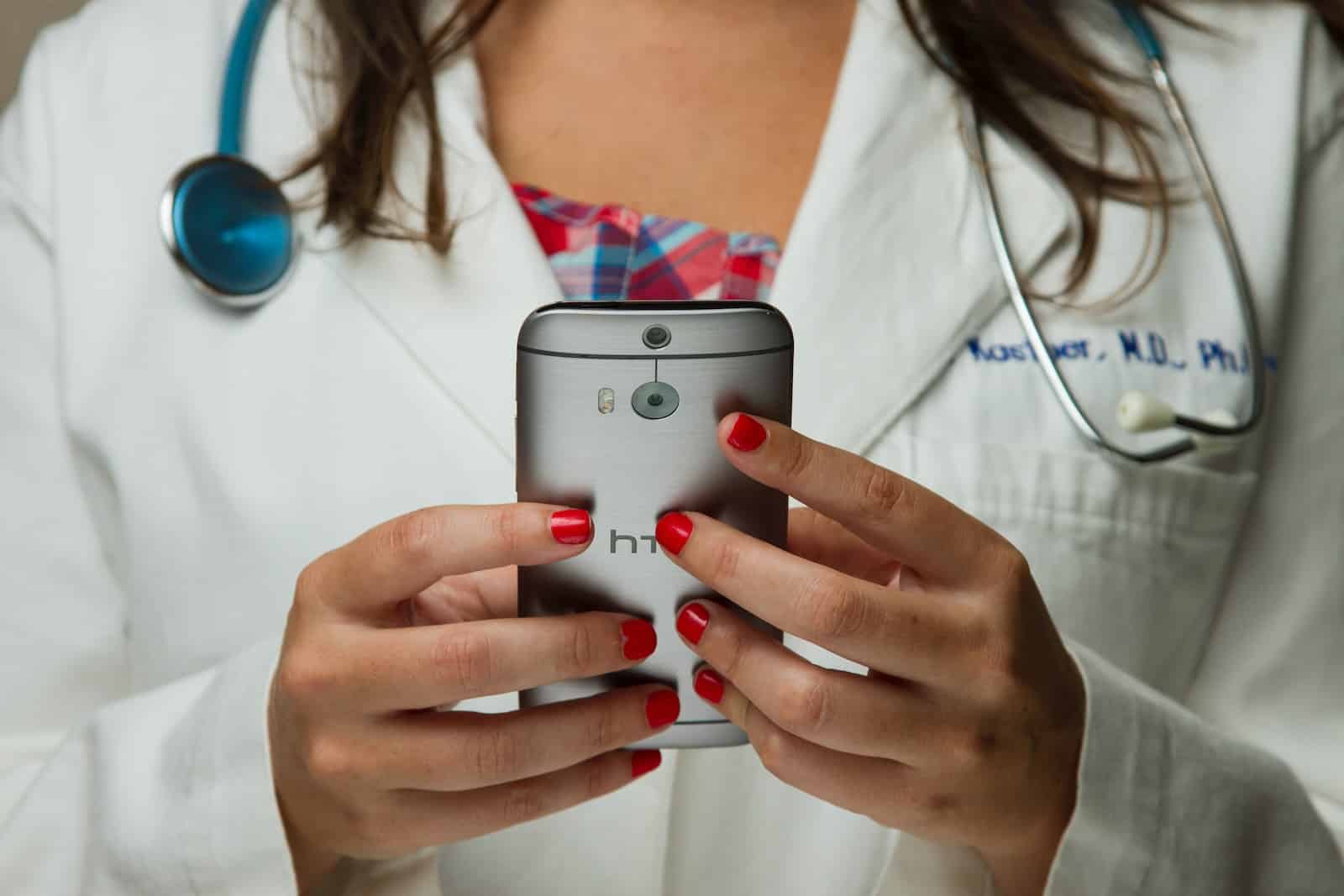The new frontiers of telemedicine

Telemedicine has emerged as a transformative force in the healthcare industry, reshaping how medical services are delivered to patients worldwide. Through innovative technologies, telemedicine is continually pushing the boundaries and expanding the scope of remote healthcare. This article explores the new frontiers of telemedicine, delving into the innovative technologies driving this revolution and the subsequent advantages and challenges presented to the healthcare industry.
The Advent of Artificial Intelligence in Telemedicine
The incorporation of Artificial Intelligence (AI) in telemedicine marks one of the most significant advancements in this field. AI is a game-changer in telemedicine, as it offers enhanced diagnostic capabilities and improved patient care, even from a distance.
A lire en complément : Inspiring use cases of chatbots in various sectors: healthcare, finance, education
AI, combined with machine learning (ML), can analyze patient data swiftly and accurately, making it easier to detect patterns that humans might miss. These capabilities are especially beneficial for managing chronic conditions such as diabetes or heart disease, where constant monitoring and immediate intervention can significantly improve patient outcomes.
Advanced AI algorithms can also help predict potential health risks based on a patient’s medical history, lifestyle, and genetic background, paving the way for personalized healthcare. These predictive capabilities empower physicians to make proactive decisions about patient care, leading to early detection and treatment of diseases.
A lire également : Mobile technology and its impact on society
Moreover, AI tools integrated with telemedicine platforms can automate routine administrative tasks such as scheduling appointments or reminding patients to take their medication, enhancing the efficiency of healthcare delivery.
Virtual Reality and Augmented Reality: Enhancing Patient Experience
Virtual Reality (VR) and Augmented Reality (AR) technologies are entering the realm of telemedicine, opening new dimensions for remote patient care. These innovative technologies can create immersive, interactive experiences that can significantly enhance the quality of healthcare delivered through telemedicine.
VR technology can simulate a real-world environment, allowing patients to interact with their doctors as if they were in the same room. This capability is particularly beneficial for therapy sessions, where a sense of presence can greatly improve the effectiveness of treatments.
AR, on the other hand, can overlay digital information onto the real world, providing additional contextual information that can help doctors deliver more precise diagnoses and treatments. For example, doctors can use AR to visualize a patient’s internal body structures during a telemedicine consultation, leading to a more informed diagnosis.
Furthermore, VR and AR can be used for medical training, allowing healthcare professionals to practice procedures and gain hands-on experience in a safe, controlled environment.
Big Data Analytics: Unleashing the Power of Data in Telemedicine
The proliferation of digital health records has resulted in a vast amount of health data being generated every day. Big Data Analytics, another frontier in telemedicine, offers the potential to harness this data to improve healthcare delivery.
Big Data Analytics can process massive volumes of health data to uncover insights into health trends, disease patterns, and treatment effectiveness. These insights can inform healthcare policies, improve patient care, and lead to more cost-effective healthcare solutions.
Moreover, Big Data can enhance the efficiency of healthcare delivery by identifying bottlenecks and inefficiencies in the healthcare system. For instance, by analyzing patient flow data, healthcare providers can optimize scheduling and resource allocation, reducing waiting times and improving patient satisfaction.
The Role of 5G in Revolutionizing Telemedicine
The advent of 5G technology is set to supercharge telemedicine services. With its high-speed connectivity and low latency, 5G can facilitate real-time communication between doctors and patients, significantly improving the quality of remote healthcare.
5G can support the transmission of high-resolution images and videos, enabling doctors to conduct thorough examinations and diagnoses remotely. This capability is particularly beneficial for specialties such as radiology or dermatology, where visual acuity is crucial.
Moreover, 5G can support the use of IoT devices in telemedicine, such as remote patient monitoring devices, enhancing the continuity of care for patients with chronic conditions.
Addressing the Challenges: Privacy, Security, and Regulatory Concerns
Despite the exciting advancements in telemedicine, the industry also faces significant challenges, particularly regarding privacy, security, and regulatory compliance. With large amounts of sensitive patient data being transmitted and stored, protecting this data is a top priority for healthcare providers.
Healthcare providers must adhere to strict data protection regulations, such as the Health Insurance Portability and Accountability Act (HIPAA) in the U.S, to ensure patient data is kept confidential and secure. Additionally, they must implement robust cybersecurity measures to guard against data breaches and cyberattacks.
Furthermore, the regulatory landscape for telemedicine is complex and varies across jurisdictions, posing challenges for healthcare providers offering telemedicine services across borders. Providers must navigate these regulations carefully to ensure they are compliant and can deliver safe, high-quality care to their patients.
Despite these challenges, the future of telemedicine looks promising, with continual advancements in technology enabling more effective and efficient remote healthcare delivery. As healthcare providers navigate these new frontiers, they are revolutionizing the way healthcare services are delivered, bringing quality healthcare closer to patients, no matter where they are.
Blockchain Technology: Ensuring Data Integrity and Transparency in Telemedicine
In the era of digitized health records and telemedicine, Blockchain technology has emerged as a promising solution to ensure data integrity, transparency, and security. Blockchain is a decentralized and distributed digital ledger that securely records transactions across multiple computers. In the context of telemedicine, it can securely store and manage patient health records, ensuring data security, and providing a transparent trail of access and modifications.
Blockchain allows healthcare providers to create a secure, unalterable record of patient data, which is particularly useful in the telemedicine field where data is constantly being transferred and updated. It can also ensure the privacy and confidentiality of health records by providing a secure system for data sharing among authorized individuals only.
Moreover, Blockchain can streamline administrative processes in telemedicine, reducing costs and enhancing efficiency. For instance, it can automate claims processing, eliminating the need for manual verification and reducing fraudulent claims. It can also facilitate the secure sharing of health data among healthcare providers, patients, and researchers, promoting collaboration and innovation in healthcare.
Despite its potential, deploying blockchain in telemedicine requires overcoming challenges related to technological infrastructure, interoperability, and regulatory compliance. Nonetheless, with ongoing research and technological advancements, blockchain is poised to bring transformative changes to telemedicine.
Conclusion: The Future of Telemedicine
The rapidly evolving landscape of telemedicine continues to redefine healthcare delivery. As we move forward, technologies such as AI, VR and AR, Big Data, 5G, and Blockchain will play a pivotal role in shaping the future of telemedicine. They promise to make healthcare more accessible, efficient, and personalized, changing the way we perceive and experience healthcare.
However, it’s equally important to address the challenges associated with these advancements, particularly concerning data security, privacy, and regulatory compliance. It’s essential to strike a balance between leveraging technology to improve healthcare and ensuring the safety and privacy of patient data.
The shift to telemedicine also requires a change in mindset from both healthcare providers and patients. While technology can offer numerous advantages, it’s the human touch in healthcare that often makes a significant difference. Therefore, even as we leverage technology, the focus must remain on enhancing the patient experience and ensuring patient-centered care.
In conclusion, telemedicine, with its new frontiers, is transforming healthcare delivery in unprecedented ways. However, the journey is just beginning. As we explore these new frontiers, we must continue to strive for a healthcare system that is not just technologically advanced, but also accessible, compassionate, and patient-focused. The future of telemedicine looks promising, and with continuous innovation and thoughtful implementation, it can revolutionize healthcare as we know it.
